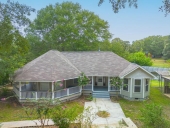




There is no box.









There is no box.












There is no box.












There is no box.








Paddy82 wrote:
But how would you get it to warm in winter? If outside temp is -5C, ground temp is a constant 4C it is definately warmer, but you'd prefer around 20C in your home... So how would it warm? A heat pump? Then that becomes another story altogether.




Jami McBride wrote:
The thing that bothers me with drawing air from under the house is that there must be an air space under there, and I was planning on no air space with a cob house. I don't really understand the pros and cons regarding heating/cooling of a house that has a crawl space and one that doesn't.




 1
1




Muzhik wrote:
Vapor seal the flooring, and insulate the walls and the underside of the floor (the top part of the crawlspace) for the most efficient heating and cooling.
Set the refrigerator part to 38 degrees Fahrenheit (3°C) and freezer part to 0 degrees Fahrenheit (-18°C). Bacteria grows most rapidly between 40 degrees Fahrenheit (4°C) and 140 degrees Fahrenheit (60°C). Zero degrees Fahrenheit (-18°C) is the temperature, suitable for long term frozen items preservation.






There is no box.








If it's more like 10 degrees C, that's good news. But is that true for all non-permafrost latitudes? This would really make massive difference (to the better) to my plans




There is no box.













There is no box.








timby wrote:
Guys take a look at the following for an idea:
http://fourmileisland.com/IceBox.htm




 1
1








Idle dreamer








Ludi Ludi wrote:
Don't know if anyone has posted this yet - refrigeration for hot climates: http://www.scienceinafrica.co.za/2004/september/refrigeration.htm
 1
1





|
Maybe he went home and went to bed. And took this tiny ad with him:
The new kickstarter is now live!
https://www.kickstarter.com/projects/paulwheaton/garden-cards
|






